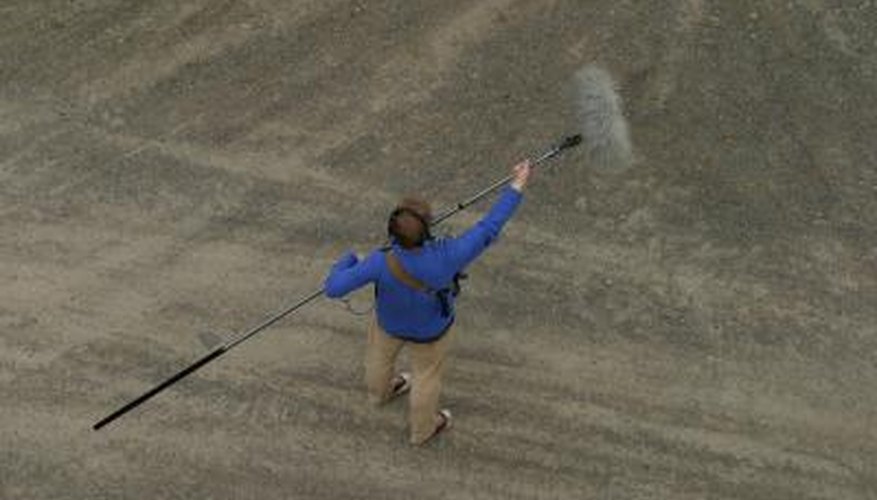A boom mic, or microphone, is a microphone fixed on a boom mic stand, boom arm attachment or other pole-type extension, for the purposes of capturing sound. It often requires longer cabling than a hand-held microphone, on account of the extended length of the stand, arm or pole. There are some disadvantages to a boom mic, but several advantages, too.
Reach
As TV production engineer Herbert Zettl points out, the big advantage of a boom mic is its reach. Since the stand, arm or pole on which the mic is attached can function as an extension of the boom operator's arm, he can reach much further than someone holding a conventional microphone. For example, a boom operator can reach over the heads of a crowd of journalists surrounding a famous person, to place the microphone closer to the famous person's mouth than anyone else's mic.
Direction
Another significant advantage of a boom mic is its usefulness in homing in on a sound source. Fixed microphones simply capture whatever sound comes their way. A boom mic can be used as a portable capture device, where the boom operator follows a moving source of sound, such as someone walking and talking, to capture it. Whichever way the person turns, the boom mic operator can usually adjust the position of the mic accordingly, although as sound engineer Richard Patton can attest, this may take practice.
- Another significant advantage of a boom mic is its usefulness in homing in on a sound source.
- A boom mic can be used as a portable capture device, where the boom operator follows a moving source of sound, such as someone walking and talking, to capture it.
Non-Obstructive
Because a boom microphone can be held over the head or heads of an individual or group, it can be operated in a non-obstructive way. At a press conference, for example, sometimes a forest of microphones almost hides the speaker's face. A boom mic can be operated in such a way that journalists can hear the speaker clearly while getting an unobstructed view, too. Similarly, a boom microphone can be operated effectively in a television program or film without being seen.
- Because a boom microphone can be held over the head or heads of an individual or group, it can be operated in a non-obstructive way.
- Similarly, a boom microphone can be operated effectively in a television program or film without being seen.
Reduced Handling Noise
The sounds captured by hand held mics often suffer from handling noise, a kind of disruption to the sound signal caused by the movement of the holder's hands on the shaft of the microphone, and associated interference. This can compromise the sound recording to such a degree that it cannot be used. A boom mic usually has less handling noise because any handling taking place is at some distance from the head of the microphone, where the sound is captured.
